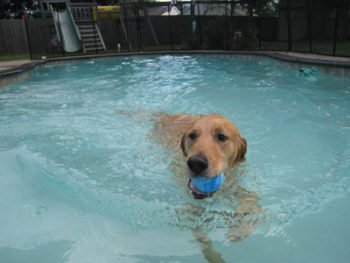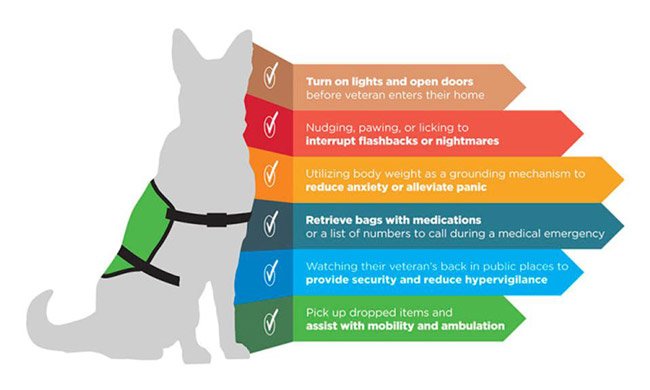5 Best Tax Deductions For Pet Owners In 2021

As a pet-loving financial planner, I tend to attract a lot of clients who are also pet lovers. With this in mind, I have been asked countless times if there are any tax breaks for the owners of pets. I would like to share the top five tax deductions for pet owners.
Whether you are a long-time pet owner or one of the millions of households that adopted pets during the Covid-19 pandemic, keep reading to see if you can benefit from these valuable tax deductions.
Even though pet parenting might feel like a full-time job, sadly, the IRS doesn’t allow you to claim pets as dependents on your tax returns. But you still might be able to qualify for a pet-related tax break.
The Potential Tax Deductions for Pet Owners
Pet-related tax breaks only apply to specific situations. These tax deductions are often associated with service animals and pets that are a part of a business.
Still, you may be able to claim deductions if you and your pet meet certain criteria. You could write off the cost of a variety of expenses, such as veterinary care, food necessities, pet supplies, training, grooming, and boarding. Make sure to consult with your tax professional to see if you are eligible to apply these valuable pet deductions on your tax returns.
1. Tax Deductions for Service Animals
If you have a service animal, you may get a tax break under the Medical Expense deduction. To qualify, your medical expenses paid during the year must exceed 7.5% of your adjusted gross income. As such, you may be able to get a tax deduction for pet expenses if your pet helps you in a medical capacity or performs certain services.
For example, people who are blind, or hearing impaired, and rely on a guide dog may be able to claim a deduction for training and caring for the dog. Similarly, veterans, and others suffering from PTSD, may be able to claim a tax deduction for a dog that performs specific services, like these:

Tax Deductions for Service animals and other pet owners – Source: purina.com
For those who have an Emotional Support Animal (ESA), you may be able to claim a tax deduction for the costs associated with caring for the ESA. While your pet may, in fact, provide emotional support, not every pet qualifies for this tax deduction.
To take advantage of this pet tax deduction, you must be able to prove that your service animal helps you treat a diagnosed mental or physical need. In case the IRS comes calling, be prepared to provide a note from your physician as proof that you need a service or support animal.
2. Tax Deductions for Working Animals
As a Los Angeles Financial Planner, I know many people who work in the entertainment industry. I’m sure I’ve also passed many animals that also perform for a living. You don’t have to be the pet parent of the next Lassie to get a tax break for a working animal.
Business owners may be able to get a tax deduction if their pet provides a service for the business. In this case, you’d be claiming a business expense tax deduction, so you’d need to be able to prove that the cost of keeping your pet is a necessary part of operating your business.
Speaking of Hollywood, I am watching “Call Me Kat” with Mayim Bialik. In the show, she owns and runs a cat café. If this were real life, Kat could deduct the cost of keeping the cats as a business expense, and they are literally the selling point of her café.
If you want to claim this type of pet tax deduction, hold on to all your receipts for caretaking expenses. Examples of purchases include food and veterinarian costs. You should also keep a record of how much time the animal spends at your business.
Sadly, just taking your pets to work with you doesn’t make them a necessary business expense.
3. Tax Deductions for Performance Animals
If your pets perform in a way that earns you income, they could potentially be claimed as a business expense. For example, you might ride horses as a hobby. But if you are a jockey who makes a living by racing horses, the IRS might consider the cost of care for that horse as a business expense. More than likely, you just own the horse and pay a jockey, but you get the point.
If your pet is so cute pet, they appear in commercials, television programs, movies, or print advertisements, and are paid for these appearance they could qualify for pet tax deductions for performance animals. The same could be true if your adorable dog is the star of your monetized YouTube channel. Just be sure to keep accurate records of every expense related to your pet and the activity that earns income. Again, if the pet just happens to be in the background of your video, you probably can’t deduct its care.
On the flip side, if you own Tika the Iggy who has more than 1 million followers on Instagram, you are likely earning a significant amount of money and incurring some valuable pet tax deductions.
4. Tax Deductions for Fostering Pets
Fostering pets might get you a tax deduction. In fact, every expense you pay caring for foster animals could be deducted as charitable donations, if the animals are from a qualified nonprofit. Sadly, this doesn’t apply to a dog you find wandering the streets or care for when a friend can’t take care of their wanted, or unwanted, pet.
Most nonprofits will pay for the cost of food and veterinary care if you foster pets for them. But anything you pay out of pocket that’s necessary for the care of the animals could be deductible. Most pet foster parents go above and beyond and take amazing care of their foster pets.
Volunteers at animal shelters or rescue organizations may be able to deduct fuel costs, so keep track of your mileage. Note that this pet tax deduction only applies to driving done in service to the organization’s mission, not to your commute.
5. Tax Deductions for Pet-Related Moving Expenses
There seems to be a flood of people moving during the Coronavirus Pandemic and lockdown. Pet owners who move may be able to benefit from a tax deduction for the costs of transferring their pets to their new homes, but only if those pet owners meet certain conditions established by the IRS:
- The move must closely relate to the start of work.
- Your new primary job location must be at least 50 miles farther from your old home than your previous job location.
- After the move, you must work full-time at your new job for at least 39 weeks the first year.
While we don’t think anyone gets a pet for the tax deduction, it sure can help when you get hit with a surprise vet bill. Talk with your fabulous financial planner and tax pro to see if you may qualify for a tax deduction for any expenses you’ve incurred caring for your pets.
- Behavior (15)
- Caring for your pet (291)
- cat (15)
- Community Events (20)
- dog (16)
- From Our Clients (15)
- Happy Tails (12)
- News (453)
- Press (53)
- Products (2)
- Questions (4)
- Recalls (1)
- Special Offers (6)
- Tips & Advice (231)
- Uncategorized (21)
- Veterinary Services (49)
